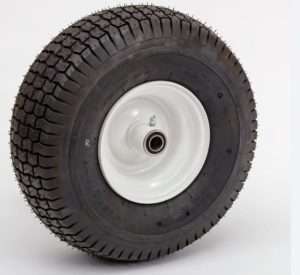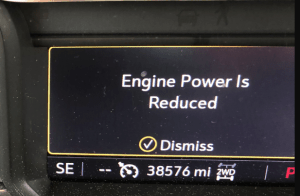Does tire rotation affect alignment? You Need to Know About Tire Rotation and Alignment
Tire rotation is the practice of moving your tires from one position to another on your vehicle. The most common tire rotation pattern is front to rear, but there are other patterns that can be used as well. Rotating your tires helps to distribute wear evenly, which can prolong the life of your tires.
It’s important to note that tire rotation does not affect wheel alignment. Wheel alignment is the process of making sure your wheels are pointing in the right direction. This is different from balancing, which is the process of making sure your wheels are evenly weighted.
What is a tire rotation?
Tire rotation is the process of moving your tires from one position to another on your vehicle. The purpose of tire rotation is to help evenly distribute wear and tear on all four tires, which can help extend their lifespan.
There are a few different patterns that you can follow when rotating your tires, but the most common is the “forward cross.” This pattern involves moving the front left tire to the back right position, the front right tire to the back left position, the back left tire to the front right position, and finally, the back right tire to the front left position.
There are a few things that you should keep in mind when rotating your tires. First, make sure that you consult your owner’s manual or a professional mechanic to find out what pattern is best for your vehicle.
What Exactly is Wheel Alignment?
Wheel alignment is critical for maintaining control of your vehicle and ensuring a smooth ride. When your wheels are properly aligned, they point in the same direction and rotate evenly. This minimizes wear on your tires and suspension components and helps improve fuel economy.
There are three main types of wheel alignment: toe, camber, and caster. Toe alignment is when the front and back of the tires point inward or outward. Camber alignment is when the top of the tire tilts inward or outward. Caster alignment is when the steering wheel is not perpendicular to the ground.
Most vehicles will need an alignment at least once a year, but it’s important to consult your owner’s manual or a certified technician to find out what’s best for your vehicle.
How often should do tire rotation?
Most carmakers recommend a tire rotation every 5,000 to 7,500 miles. However, there are a few factors that can affect how often you should rotate your tires. These include the type of vehicle you drive, the type of tires you have, and how you drive.
If you have a front-wheel drive vehicle, your front tires will wear out faster than your rear tires. This is because they bear the brunt of the weight and power of the engine. To even out the wear, it’s important to rotate your tires regularly.
All-wheel drive and four-wheel drive vehicles distribute power evenly to all four wheels. This means that all four tires will wear out at about the same rate. For these vehicles, tire rotation is still recommended every 5,000 to 7,500 miles.
How often should do wheel alignment?
It is important to have your wheels aligned relatively often to ensure you have a smooth ride. However, there are a few things that affect how often you should get your alignment done.
First, consider the type of roads you typically drive on. If you live in an area with lots of potholes or curvy roads, your alignment will need to be checked more frequently. Secondly, think about your driving habits. If you find yourself constantly hitting the curb or running over potholes, your alignment will be affected more than someone who drives smoothly and carefully.
So how often should you get your wheel alignment done? The answer may vary depending on who you ask but generally speaking, every 6 months to a year is a good rule of thumb.
Benefits of tire rotation
Tire rotation is the practice of moving the wheels and tires of a vehicle from one position to another, to ensure even tire wear.
There are many benefits to tire rotation:
- Increased tire life – by rotating your tires, you can help them last longer.
- Improved gas mileage – properly inflated and rotated tires can improve your fuel efficiency.
- Enhanced traction – rotated tires provide a better grip on the road, which can be especially beneficial in inclement weather.
- Better handling – well-maintained tires improve your vehicle’s handling characteristics.
- Safer driving – making sure your tires are in good condition will help you avoid accidents and breakdowns.
Benefits of wheel alignment
Wheel alignment is important for maintaining your vehicle’s handling and improving fuel economy. The benefits of wheel alignment include:
1. Improving your vehicle’s handling – When your wheels are properly aligned, your car will handle better overall. This can make driving more enjoyable and can help you feel more confident behind the wheel.
2. Extending the life of your tires – Properly aligned wheels put less strain on tires, which helps them last longer. This can save you money in the long run by reducing the need for frequent tire replacements.
3. Improving fuel economy – Aligned wheels result in less rolling resistance, which means your engine doesn’t have to work as hard to move the car forward. This can lead to better gas mileage and reduced emissions.
Conclusion
Tire rotation does not seem to have a significant effect on alignment. However, it is important to keep an eye on your tires and get them aligned when needed. Regular maintenance of your vehicle will help keep it running smoothly for years to come.
FAQs about: Does tire rotation affect alignment?
1. Does tire rotation affect alignment?
No, tire rotation does not affect alignment. Alignment is determined by the position of your tires in relation to the suspension and steering components of your vehicle.
2. How often should I rotate my tires?
Most manufacturers recommend that you rotate your tires every 5,000 miles. However, it’s a good idea to check your owner’s manual or with your local tire dealer for specific recommendations.
3. What are the benefits of a tire rotation?
Tire rotation helps to evenly distribute wear and tear on your tires, which can extend their life. It can also help improve your vehicle’s handling and fuel economy.
4. Can I rotate my own tires?
Yes, you can rotate your own tires. However, it’s important to make sure that you do it correctly. If you’re not sure how to rotate your tires, ask a professional at your local tire dealer or auto shop.
5. What should I do if I suspect my alignment is off?
If you suspect that your alignment is off, the best thing to do is to take your vehicle to a qualified mechanic or tire dealer. They



